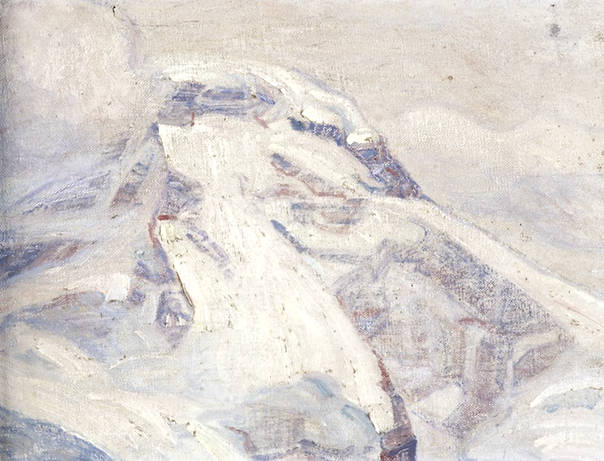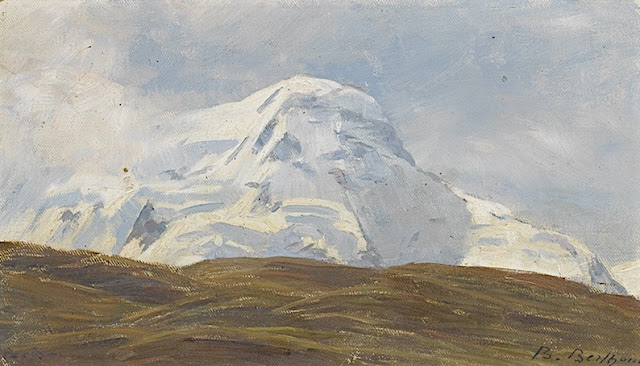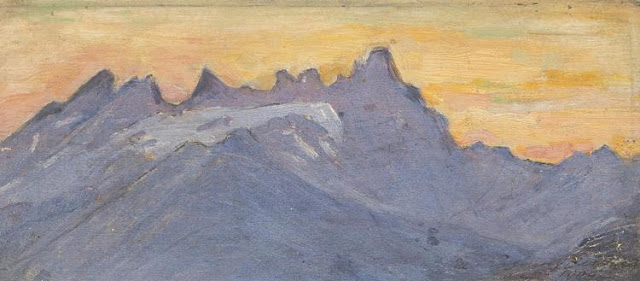BLANCHE BERTHOUD (1864 -1938)
Breithorn (4,165 m-13,664 ft)
Suisse-Italie
In Breithorn, huile sur carton, 25 x 33cm, 1920, Collection privée
La montagne
Le Breithorn (4,165 m) est une montagne du massif des Alpes pennines, à la frontière entre la Suisse (canton du Valais) et l'Italie (Vallée d'Aoste). Le Breithorn possède cinq sommets principaux : le Breithorn occidental (4 163 ou 4 165 m) ; le Breithorn central (4 156 ou 4 160 m) ; le Breithorn oriental (4 138 ou 4 141 m) ; le Breithornzwillinge (4 106 m) ; la Roche Noire (4 074 ou 4 075 m).
La première ascension du Breithorn a été réalisée le 13 août 1813 par Henry Maynard avec Jean-Marie Couttet, Jean Gras, Jean-Baptiste et Jean-Jacques Érin.
Actuellement le Breithorn est considéré comme le 4 000 le plus facile des Alpes car un téléphérique amène les alpinistes au Petit Cervin, à 3 820 m d'altitude.
La peintre
Blanche Berthoud est
une artiste peintre suisse de la région de Neufchâtel (Suisse) qui a
été très active tout au long de la première moitié du 20e siècle. Elle
fait partie de la Société romande des femmes peintres fondée par la
peintre Jeanne Lombard (1865-1945) qui défend très farouchement les
femmes peintres montagnardes, un monde souvent réservé aux hommes. Elle a
réalisé plusieurs peintures et aquarelles du Breithorn, dont l'une a
été acquise par le Musée d'Art et d'Histoire de Neufchâtel.
2023 - Gravir les montagnes en peinture
Un blog de Francis Rousseau

%20,%20oil%20on%20cardoarod,%20LEs%20dents%20du%20Midi,%201949.%20PC%20.png)





